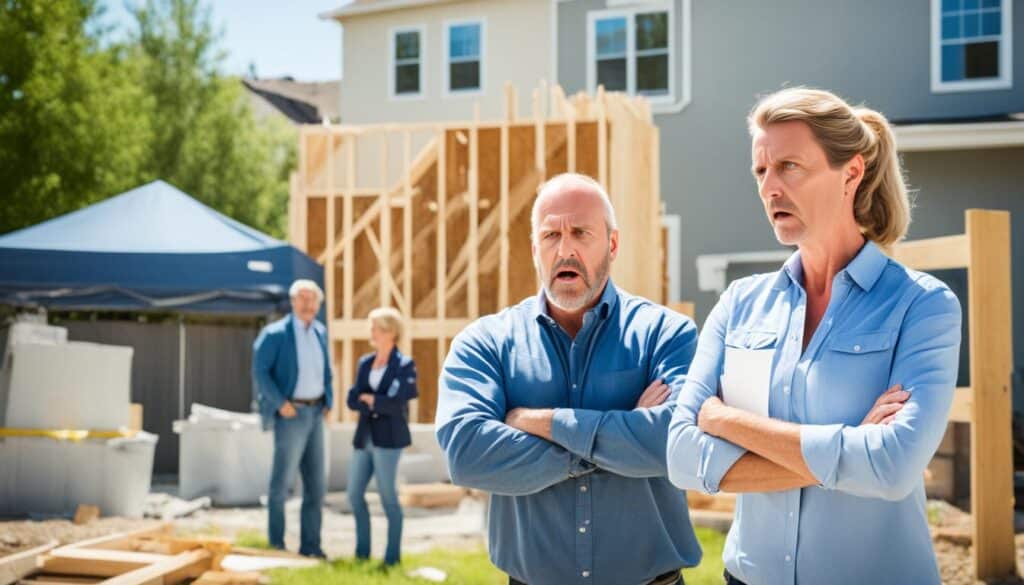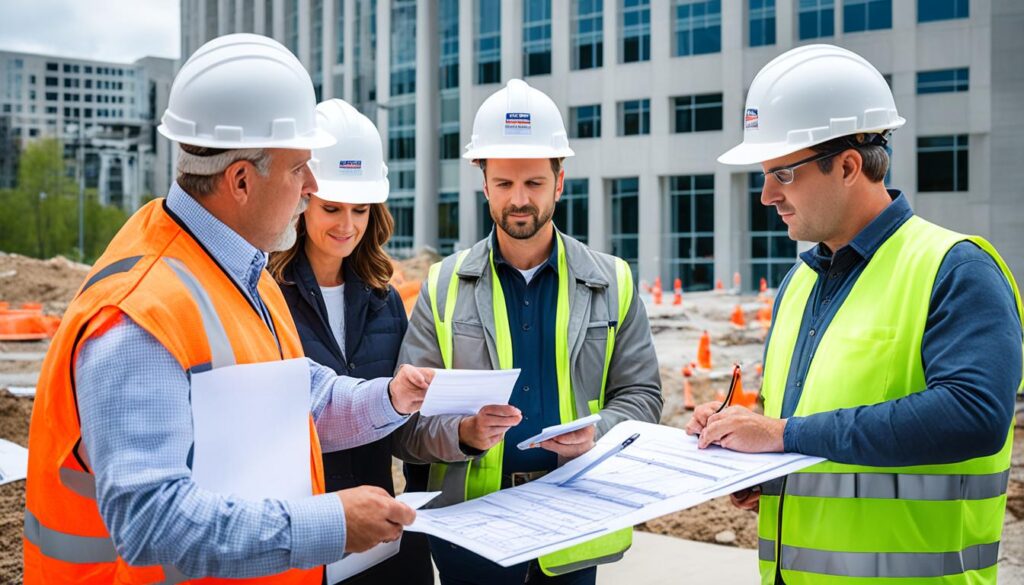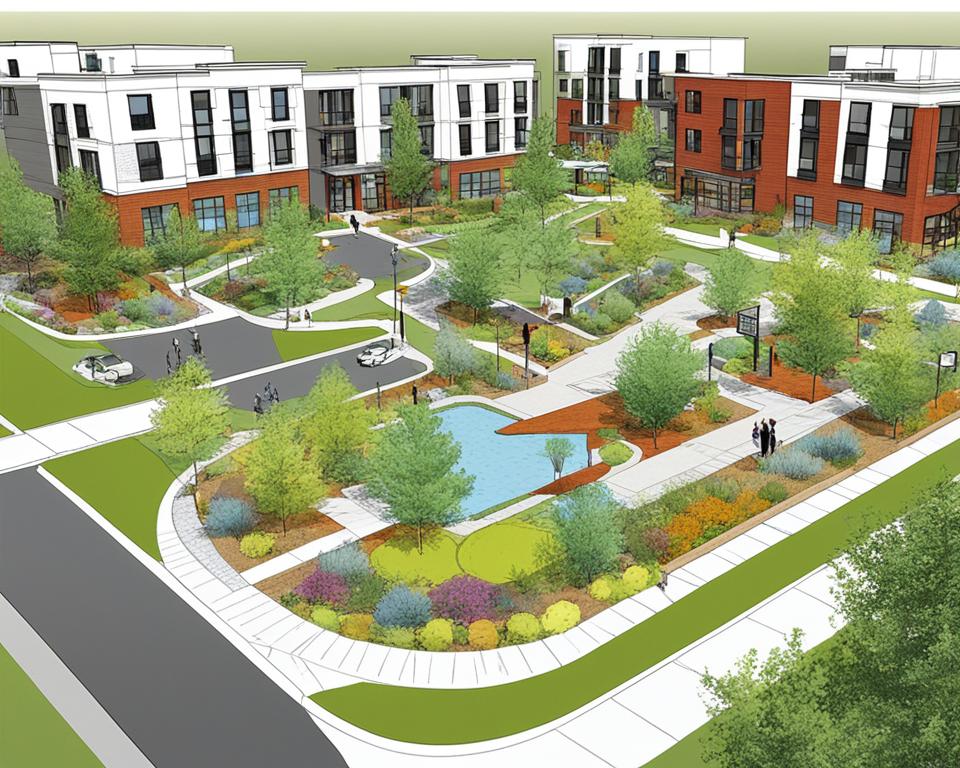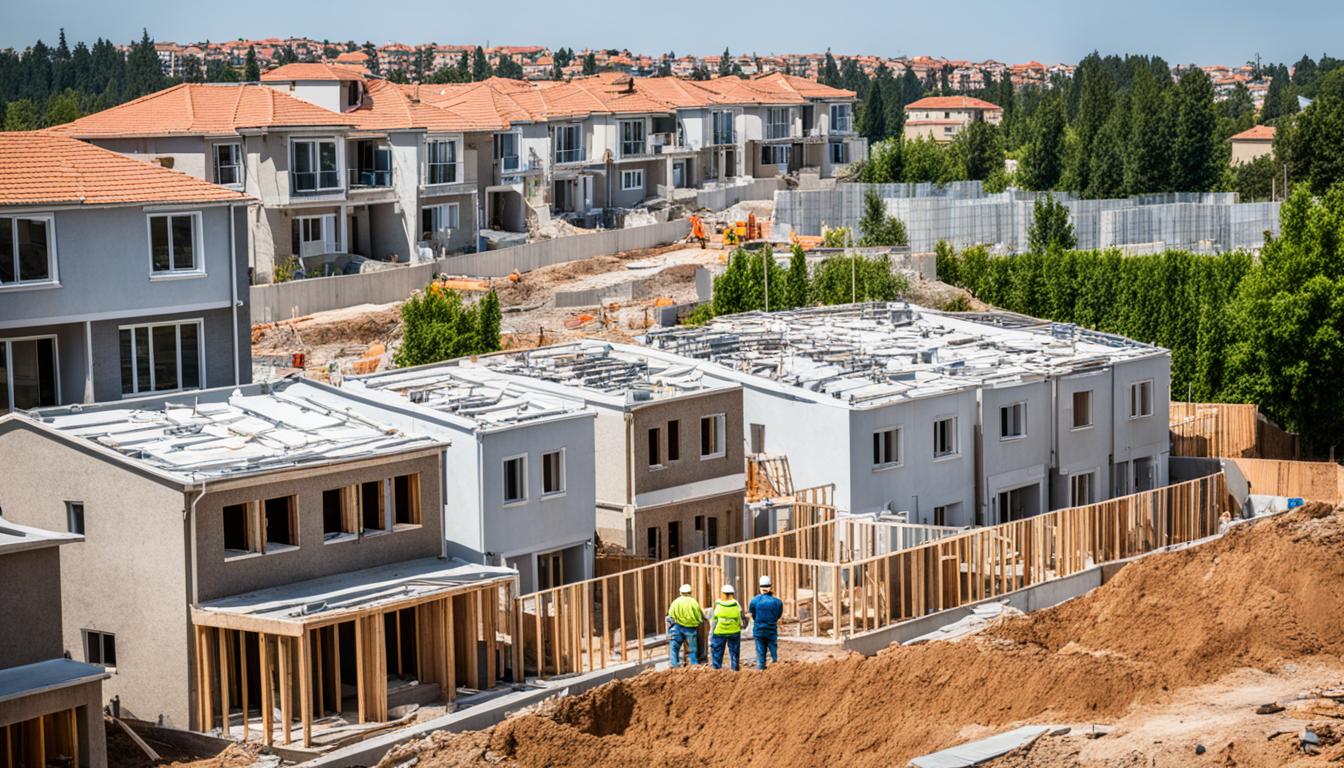Navigating the realm of home improvements and expansions can bring unexpected twists and turns, especially when it comes to navigating property development disputes. For homeowners dreaming of an addition or transformation, the question often arises: What if my neighbor raises building objections? Understanding the dynamics between homeowner aspirations and the concerns of those living next door is key to resolving construction conflicts smoothly. In this article, we delve into the complexities of property rights, the legality of neighbor’s objections, and the potential avenues homeowners have to address and resolve these disputes.
For any ambitious project aiming to alter the landscape of one’s home, it’s crucial to assess the impacts on neighboring properties and the community at large. Here lies a delicate balance between progress and preservation, collaboration and contention—a balance that requires a keen understanding of local regulations, communication skills, and sometimes, a touch of diplomacy.
Key Takeaways
- Identify local zoning laws and understand their implications on your building project.
- Recognize the importance of good neighbor relations and communication in preventing disputes.
- Learn about the legal rights neighbors have in objecting to construction, and how to address these concerns diplomatically.
- Discover strategies for homeowners to pursue their building plans while navigating neighbor’s building objections.
- Understand the various dispute resolution avenues available to resolve property development disputes effectively.
- Gain insight into the significance of acquiring proper permits and adhering to building regulations.
- Realize the potential role of homeowners’ associations in the building approval process.
Understanding Your Property Rights
When considering a new build or modifications to your existing home, it’s imperative to have a comprehensive grasp of the legal framework governing your property. This understanding will be your foundation for moving forward with any project and is crucial in preventing and resolving potential disputes. Establishing an awareness of property zoning, building permits, easement rights, and property boundary laws can save you from future headaches and help ensure your building endeavors proceed smoothly.
Zoning Laws and Building Regulations
Property zoning represents the segment of land use regulations serving as a blueprint for city planning. These ordinances delineate the types of structures permissible and govern the dimensions and placement of buildings within the property lines. Prior to embarking on a building project, verifying compliance with local zoning laws is a critical step. Obtaining the requisite building permits is also part and parcel of adhering to these regulations, signaling that your proposed construction aligns with community standards and safety protocols.
Easements and Right of Way
Easements are critical, yet often overlooked, elements affecting property rights. They entail a legal allowance for the usage of a portion of your land by someone else, primarily for access or infrastructure purposes. Be sure to investigate any pre-existing easements tied to your property since these rights can significantly influence your construction plans, potentially limiting where and what you can build.
Boundary Disputes and Resolutions
Clear demarcation of property boundaries is fundamental to the integrity of any building project. Disagreements over where your property ends and your neighbor’s begins can escalate quickly, requiring resolution through a precise survey or, in more contentious situations, legal mediation. Knowledge of property boundary laws helps in establishing clear lines and resolving conflicts amicably and effectively.
| Property Right | Description | Impact on Construction |
|---|---|---|
| Zoning Laws | Local regulations defining land use and building specifications | Determines building type, size, and placement |
| Building Permits | Official approvals for the commencement of construction work | Ensures project adherence to building codes and safety standards |
| Easement Rights | Legal provision for third-party use of property for specific purposes | May dictate accessible areas for build-out and utilities |
| Property Boundary Laws | Laws governing the determination of property lines | Affects layout and possible extensions of building projects |
Making sense of these property-related issues before breaking ground will provide a solid legal footing for any construction initiative, keeping neighborly relations friendly and projects on track.
Can a Neighbor Stop You from Building?
Embarking on a new construction project can be challenging, especially when it comes to obtaining the necessary legal clearances. A common hurdle for many homeowners is addressing legal construction objections which might arise from the surrounding community—most notably, from neighbors. The key to handling these obstacles lies in understanding the intricate building authorization process and the conditions under which neighborly consent is required.
It’s no secret that when you initiate a construction project, the implications can extend far beyond your property lines. Your neighbors have the potential to influence the progress of your build based on legitimate concerns related to privacy, noise, or environmental impact. Each of these concerns can form the basis for a legal construction objection, potentially halting your project in its tracks if not preemptively managed.

When do these objections carry legal weight? The circumstances often center around violations of zoning laws, encroachment on easements, or failure to adhere to the agreed-upon community standards. Thus, gaining neighborly consent is not merely a courtesy but an essential step in the building authorization process. Failing to secure it can lead to delays, additional costs, or even litigation.
Remember, a supportive neighborhood can be one of your greatest allies in ensuring your construction project comes to fruition without unwelcome surprises or legal pushback.
To navigate these potential pitfalls effectively, it’s advisable to:
- Engage in open dialogue with neighbors early in the planning phase.
- Present detailed plans and how they align with local zoning regulations.
- Be receptive to feedback and willing to make reasonable adjustments.
- Understand the formalities of submitting construction proposals and securing approvals, including how to formally address objections.
- Be prepared to provide additional documentation or reassurances that your project will not adversely affect the neighborhood’s character or value.
Approaching the building authorization process with thorough research and due diligence can greatly improve the chances of obtaining neighborly consent. While there’s no absolute guarantee that a neighbor won’t attempt to stop your building efforts, following the right procedures and maintaining considerate communication increases your likelihood of a positive outcome.
By staying informed about your rights and the reasonable grounds for construction objections, you can approach your project with confidence. Balancing neighborly relations with the fulfillment of legal requirements ensures your path to a successful build is as smooth as possible, laying the foundation for both a beautiful new addition to your home and a harmonious neighborhood atmosphere.
Navigating Legal Challenges in Construction
Construction projects, whether they are small residential remodels or large commercial developments, inherently come with their set of legal intricacies. Complications can arise from various aspects, such as contract disputes, issues with compliance to building codes, or zoning law infringements. Such complications often lead to construction litigation. Nevertheless, with the guidance of experienced property law attorneys, homeowners can understand effective methods for building dispute resolution.
The role of property law attorneys is not only to advocate on behalf of their clients during litigation but also to provide preemptive counseling to avoid legal pitfalls. Their expertise includes a thorough understanding of contracts, laws, and local regulations necessary to navigate any legal challenges during construction. Timely consultation with these professionals can make a significant difference in the outcome of litigious situations.
When facing potential construction litigation, the primary steps typically involve a deep dive into the contractual agreements associated with the construction project. Often, disputes may be resolved through negotiation and out-of-court settlements. Property law attorneys are adept at facilitating such negotiations, aiming for a resolution that satisfies all parties involved without the need for an extensive legal battle.
In cases where disputes escalate, property law attorneys are equipped to represent their clients through building dispute resolution processes, which may include mediation, arbitration, or trial. The chosen method often depends on the nature of the dispute, the contract terms, and the parties’ willingness to cooperate.
A common method of resolving disputes without litigation is through mediation. By agreeing to mediation, the parties show a willingness to resolve their issues amicably. It involves an independent third party helping the disputants find a mutually satisfactory solution to their conflict. Mediation can often preserve business relationships and is usually less time-consuming and costly than a trial.
If mediation does not result in a solution, arbitration may be the next step. Unlike mediation, the arbitrator’s decision is usually binding and is akin to a court judgment.
If all else fails, the dispute may go to court, and the litigation phase begins. The litigation process can be lengthy, and the outcome is open to a judge or jury’s decision. Each phase is characterized by discovery, motions, and potentially a trial, followed by appeals if necessary.
No matter the complexity, navigating the intricacies of construction law requires a disciplined and informed approach, with expert counsel guiding the way.
The key to efficiently handling legal challenges in construction is to approach each case with a solid strategy, informed by legal expertise and proactive problem-solving tactics. With their deep knowledge, property law attorneys play a critical role in ensuring that construction projects progress with minimum disruption, even in the face of legal hurdles.
To conclude, homeowners engaging in construction projects need to understand the significance of legal challenges that may arise and take proactive measures to navigate these waters. A well-informed approach to construction litigation and building dispute resolution, paired with the expert guidance of property law attorneys, provides a robust foundation to tackle any legal issues head-on, thus ensuring that the construction projects advance towards successful completion.
Communication and Negotiation with Neighbors
When embarking on a construction project, the importance of fostering positive neighbor relations cannot be overstated. Ensuring a harmonious community environment not only enhances quality of life but also lays the groundwork for smooth project progression. By prioritizing conflict resolution and construction diplomacy, homeowners can effectively consolidate community interests with personal development goals.
Importance of Maintaining Good Relationships
Maintaining good relationships with neighbors is pivotal, as it creates a supportive network that can provide assistance and understanding throughout the construction process. Positive interactions and a reputation for respectful conduct contribute significantly to the overall success of addressing and negotiating neighborly concerns. Establishing and sustaining this goodwill is a strategic aspect of neighbor relations that bears long-term benefits.
Strategies for Addressing Concerns
Implementing key strategies for open communication is vital for addressing any issues neighbors may have regarding a building project. Neighborly diplomacy should not only address current concerns but also preempt potential disputes. Here are some effective methods:
- Initiate a friendly conversation about the upcoming project, providing clear timelines and objectives.
- Involve neighbors early in the process by seeking their input and feedback, demonstrating inclusion and consideration.
- Assure disaster precautions and propose mitigation measures for noise, dust, debris, and disruption during construction.
- Hold informational meetings to discuss the projected impact on the neighborhood and hear from all parties involved.
- Provide regular updates to neighbors to keep them informed of the progress and any changes that might affect them.
- Be receptive to criticisms and complaints, showing a willingness to work towards conflict resolution.
By engaging in these practices, homeowners signal a commitment to maintaining neighborly goodwill, which can significantly ease the process should concerns arise. Construction diplomacy is enhanced when there is a clear channel of communication, and both parties feel heard and valued.
Adopting a collaborative approach can transform a potentially adversarial situation into a cooperative effort, fostering a community culture that values constructive dialog over contention. The capacity to navigate through neighborly concerns with diplomacy and tact is essential in ensuring the long-term success of any building project. Taking these proactive steps serves as a testament to the power of community and the importance of upholding positive neighbor relations for everyone’s benefit.
The Role of Homeowners’ Associations in Building Projects
Navigating the world of home renovations and community living can be complex, especially when Homeowners’ Associations (HOAs) are involved. For many homeowners, understanding and adhering to their HOA regulations is a critical component of any building project. These associations often set forth community development standards that aim to maintain a certain aesthetic and environment within the neighborhood.
The association approval process can be rigorous, requiring homeowners to submit detailed plans for any exterior modifications or construction initiatives. Compliance with these standards is not optional; rather, it’s a binding commitment each resident agrees to upon joining the community. Failing to obtain the necessary clearances can derail even the most meticulously planned projects.
When considering a new construction or modification within an HOA-governed community, homeowners must navigate the association’s intricate guidelines. Here’s how:
- Consult the HOA’s rulebook or bylaws to understand the specific regulations and standards in place.
- Prepare detailed plans of your proposed project, often including designs, color palettes, materials, and landscaping considerations.
- Submit these plans to the HOA’s architectural committee or board for review, adhering strictly to their submission process.
- Communicate effectively and be prepared to modify your plans in response to feedback from the HOA board.
- Once approved, ensure that your construction adheres to the agreed terms, as inspections and objections can occur even after approval is granted.
It’s important to recognize that while HOAs can impose certain limitations, their role is also to protect property values and maintain a cohesive community environment. Therefore, it can be beneficial to view the association approval process as a collaborative effort rather than a hurdle.

Understanding the balance between individual homeowner rights and the collective interests of the community can lead to more successful and less contentious building projects. While the intricacies of HOA regulations may seem daunting, they are in place to ensure that all changes align with the established community development standards.
Ultimately, a proactive and informed approach to dealing with your Homeowners’ Association can facilitate smoother project progression and foster a better relationship with both the HOA board and your neighbors.
By respecting these processes and working within the guidelines set forth, you can contribute to the beauty and functionality of your community while still achieving your home improvement goals.
How to Obtain Necessary Permits for Building
Embarking on a construction project requires a solid understanding of local building code requirements. Before the first shovel hits the ground, securing construction permits is a fundamental legal requirement that ensures your project meets all safety and zoning standards. In this section, we explore the critical steps to achieving code compliance and obtaining the permits vital to beginning any construction endeavor.

Understanding Local Building Code Requirements
Navigating the intricacies of local building codes can be daunting, but is an unavoidable step in the permit acquisition process. Each municipality has its own set of codes, which govern structural integrity, zoning, electrical systems, plumbing, and more. Being well-versed in these requirements not only facilitates a smoother permit application but also guides the ultimate success of your construction project. Building inspections are a critical component of this process, ensuring that every phase of the build adheres to local standards for safety and compliance.
Steps to Ensure Compliance with Regulations
To smoothly navigate the path to permit approval, one must be meticulously organized and informed. Below is a guide to the common stages and requirements you are likely to encounter:
- Start by researching your local building department’s guidelines, which are often available on their official websites.
- Gather necessary documentation, such as property surveys, detailed construction plans, and engineer reports.
- Submit your permit application, along with any required fees, to the appropriate municipal authority.
- Schedule and pass the required building inspections at various stages of your project.
- Stay prepared for additional documentation or modifications to plans as requested by the building officials.
- Finally, ensure all final inspections are completed and obtain the official documentation certifying compliance with building codes.
A well-prepared permit application, complete with all necessary documentation, increases your likelihood of a swift and affirmative response. Bear in mind that construction permits are not merely bureaucratic hurdles; they serve a vital role in upholding the safety and quality of your home and neighborhood.
| Building Permit Stage | Key Consideration | Action Required |
|---|---|---|
| Initial Research | Understanding local code requirements | Review building department’s guidelines |
| Documentation | Gathering all relevant project details | Compile surveys, plans, and reports |
| Application Submission | Filing paperwork accurately and completely | Submit application package with fees |
| Inspections | Compliance with code at each phase | Schedule and pass building inspections |
| Final Approval | Ensuring all regulations are met | Obtain final inspection and certification |
Above all, treat the permit process as an indispensable component of your project management – a step that validates your commitment to code compliance and building excellence.
Dealing with Neighbor’s Complaints During Construction
Construction projects often come with their share of disruption, which has the potential to strain relations with the neighbors. Mitigating the effects of construction activities—like noise, dust, and general disturbances—can go a long way in maintaining amity with the surrounding community. It’s also essential to be aware of the legal protections afforded to homeowners against frivolous complaints that could impede the construction process unnecessarily. Equipped with effective construction mitigation strategies and knowledge of your legal rights during construction, navigating neighbor relations can be a smoother part of the construction journey.
Handling Noise, Dust, and Other Nuisances
With any construction comes the inevitable disturbances of noise, dust, and other nuisances that can trigger nuisance complaints from neighbors. Proactive communication and implementing strategic mitigation measures can preserve good will and reduce tension. Consider the following tactics to limit disruption:
- Inform neighbors well in advance about the scope and timeline of the project.
- Adopt construction best practices by using noise-reducing equipment and scheduling high-noise tasks during less sensitive hours.
- Ensure regular clean-up to minimize dust and debris spill-over.
- Deploy physical barriers such as fencing or tarpaulins to contain the construction area.
- Consider softscape features like temporary vegetation to reduce dust and provide a visual buffer.
Such construction mitigation strategies not only demonstrate respect for your neighbors but also reduce the risk of complaints escalating to official channels.
Legal Protections Against Frivolous Complaints
While neighbors have the right to express their concerns, the law also shields homeowners from complaints that lack substantial basis. If disputes arise, it’s essential to understand one’s legal rights during construction. Homeowners are generally entitled to conduct legal construction activities during permitted hours, provided all zoning and code requirements are adhered to. Here’s how you can safeguard your project:
- Keep thorough records of permits, project plans, and any correspondence with local authorities and neighbors.
- Maintain a log of construction activities to showcase compliance with noise ordinances and building codes.
- If a complaint arises, engage diplomatically with the neighbor to address their concerns while referencing the legal permissions granted for the project.
- If necessary, consult with a legal professional who specializes in property and construction law for guidance and to affirm your rights.
Dealing with neighbor complaints effectively involves a blend of neighborly consideration and an assertive stance on your construction rights. By staying informed and taking preemptive measures, you can deftly balance good relations with the community while pursuing your building project.
Conclusion
Embarking on a construction journey is a significant undertaking that requires careful navigation through the intricacies of property rights, neighbor relations, and regulatory compliance. This article has provided comprehensive building project guidance, equipping you with the knowledge to face potential challenges—from resolving neighbor disputes to ensuring a successful home improvement project. The shared insights underscore that while neighbors may have the capacity to influence your construction plans, a well-informed approach grounded in open communication and adhering to the pertinent laws and regulations can pave the way for a favorable outcome.
As you move forward, remember that the key to maintaining harmony and progress lies in understanding and exercising your property rights, engaging in effective communication with your community, and strictly complying with local building codes. It’s this trifecta of awareness, dialogue, and legality that will support your efforts in materializing your vision for your home. Furthermore, seeking professional advice when confronted with legal complexities or intricate neighbor negotiations can offer an added layer of assurance, allowing you to advance your home improvement initiatives with confidence and clarity.
Armed with the strategies and information provided, homeowners can approach their building endeavors with optimism. By prioritizing responsible planning, negotiation, and adherence to guidelines, your construction project is more likely to progress smoothly and successfully, leading to an enhanced living space and a strengthened sense of community. It’s through these concerted efforts that you can turn the dream of an idyllic home environment into a concrete reality.





